How To: Basic Hexagon
Hexagons are a fun and versatile crochet motif that can be used for a variety of uses including blankets, table runners, doilies and potholders. Once you have the basics down, you can change the colours or stitches in the pattern to create designs that are uniquely your own.
This tutorial is based on making 7 haxagons, but really, you can make as many as you like and join them. Next Tuesday, we’ll look at half hexagons to neaten the edges.
Materials:
2x 50g balls of Debbie Bliss Rialto DK (100% wool) 105m in Grey (004) (Col A)
1x 50g ball of Debbie Bliss Rialto DK (100% wool) 105m in Fuschia (034) (Col B)
4 mm/US 6 hook.
Tapestry Needle.

Gauge:
Each motif measures 15cm/6” across using a 4mm/US 6 hook.
Gauge isn’t crucial to this pattern, but will effect the size of the final object and the amount of yarn used.
Abbreviations:
This version of the pattern uses UK terms
Ch Chain
Rnd Round
Tr Treble Crochet
Written Out Instructions:
Motif pattern (make 7):
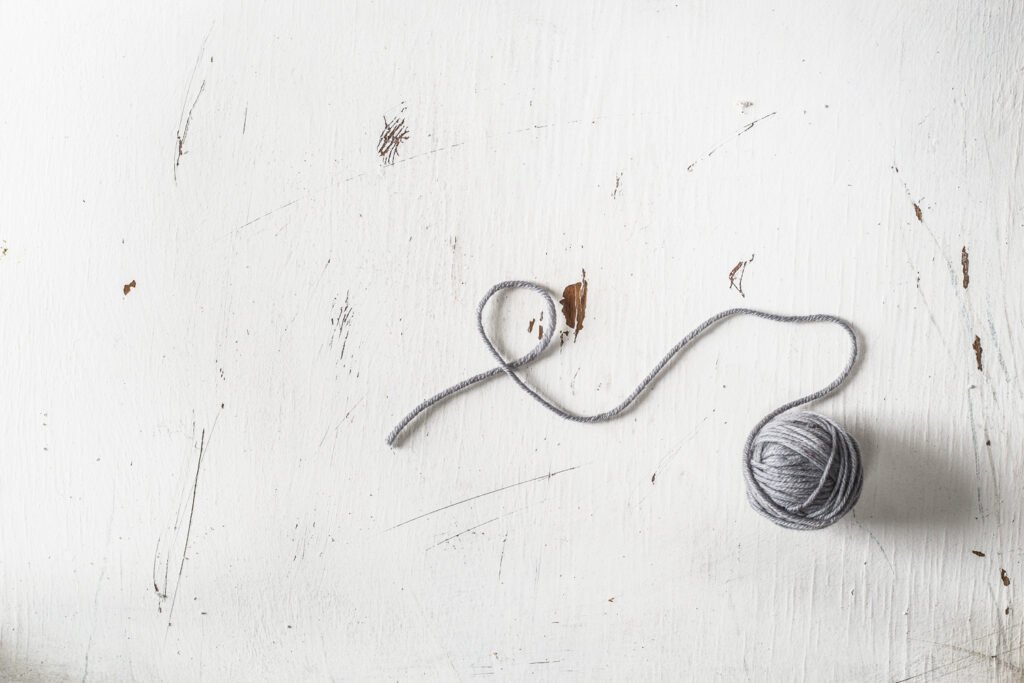
Step 1: ROUND 1: Start with Col A and a magic loop.
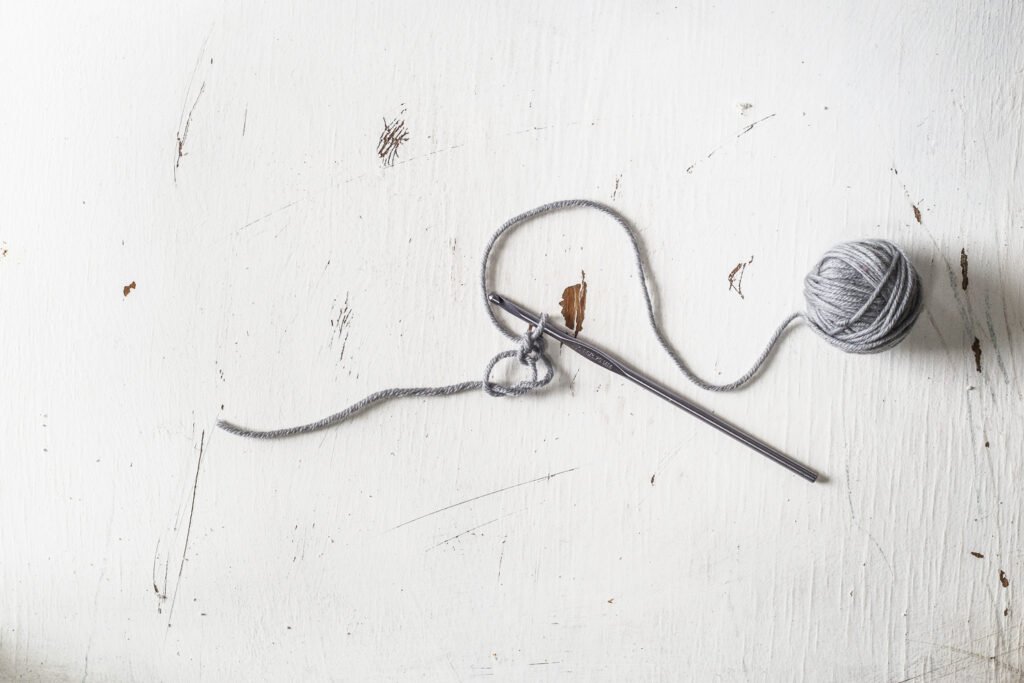
Step 2: Chain 3 (this counts as 1 treble stitch).

Step 3: Working into the centre of the magic loop make 1 treble. Chain 2.

Step 4: Continuing to work into the centre of the magic loop, treble 2, chain 2.
Work Step 4 a total of 5 times. You should have 12 treble stitches including your 3-chain at the beginning of the round.

Step 5: Join with a slip stitch into the top of the 3-chain that started the round.

Step 6: Round 2: Chain 3 (counts as 1 treble), treble in the next stitch.

Step 7: Work 1 treble, 2 chain and 1 treble all into the 2-chain space.
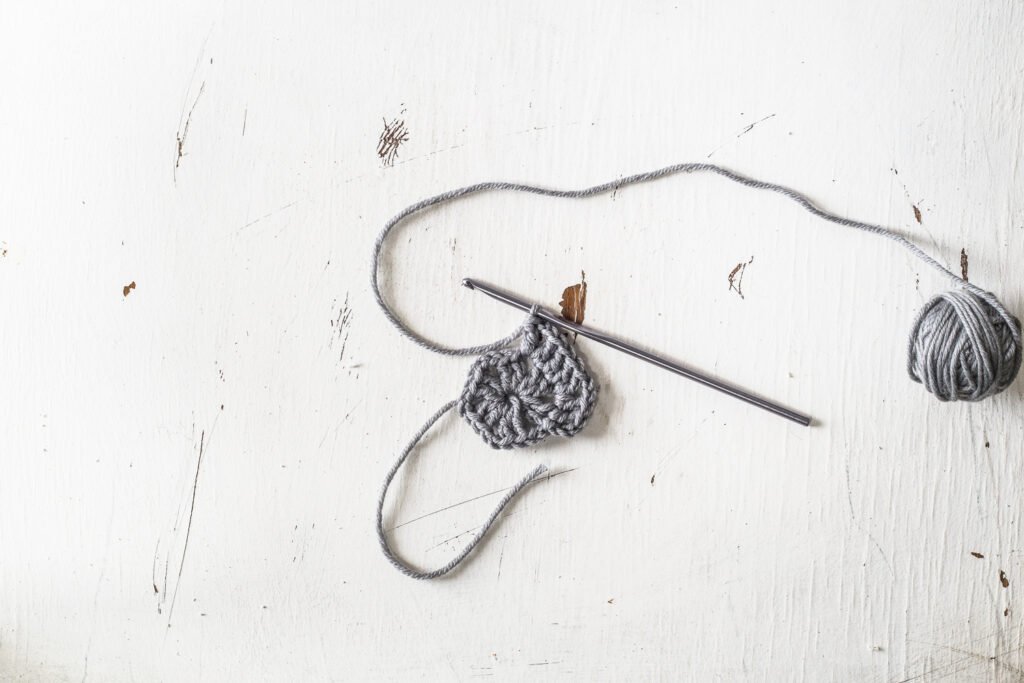
Step 8: Work 1 treble into the next 2 stitches. Work 1 treble, 2 chain and 1 treble into the 2-chain space.
Work Step 8 a total of 5 times.

Step 9: Join with a slip stitch into the top of the 3-chain that started the round. You should have 24 treble stitches including your 3-chain at the beginning of the round.

Step 10: Round 3: Chain 3 (counts as 1 treble), work treble into each of the next 2 stitches. Work 1 treble, 2 chain and 1 treble all into the 2-chain space.

Step 11: Work 1 treble into the next 4 sticthes. Work 1 treble, 2 chain and 1 treble all into the 2-chain space.
Work Step 11 a total of 5 times. Work 1 treble into final stitch of round.

Step 12: Join with slst into the top of the 3-chain that started the round. You should have 36 treble stitches including your 3-chain at the beginning of the round.

Step 13: Round 4: Chain 3 (counts as 1 treble), work 1 treble into each of the next 3 stitches. Work 1 treble, 2 chain and 1 treble all into the 2-chain space.
[Work 1 treble into each of the next 6 stitches. Work 1 treble, 2 chain and 1 treble all into the 2-chain space] Work the sequence in [] a total of five times. Make 1 treble into each of the next 2 stitches. Join with slst into the top of the ch-3. . You should have 48 treble stitches including your 3-chain at the beginning of the round.

Step 14: Round 5: Chain 3 (counts as 1 treble), work 1 treble into each of the next 4 stitches. Work 1 treble, 2 chain and 1 treble all into the 2-chain space.
[Work 1 treble into each of the next 8 stitches. Work 1 treble, 2 chain and 1 treble all into the 2-chain space] Work the sequence in [] a total of five times. Make 1 treble into each of the next 3 stitches. Join with slst into the top of the ch-3. . You should have 60 treble stitches including your 3-chain at the beginning of the round.

Step 15: Round 6: Chain 3 (counts as 1 treble), work 1 treble into each of the next 5 stitches. Work 1 treble, 2 chain and 1 treble all into the 2-chain space.
[Work 1 treble into each of the next 10 stitches. Work 1 treble, 2 chain and 1 treble all into the 2-chain space] Work the sequence in [] a total of five times. Make 1 treble into each of the next 4 stitches. Join with slst into the top of the ch-3. You should have 72 treble stitches including your 3-chain at the beginning of the round.
Joining
Tips for Joining:
Try to work into as long of lines as you join. If you are joining in rows, work the longest row possible first, then join the sides, or as in this example, work around one hexagon first and then join the sides.
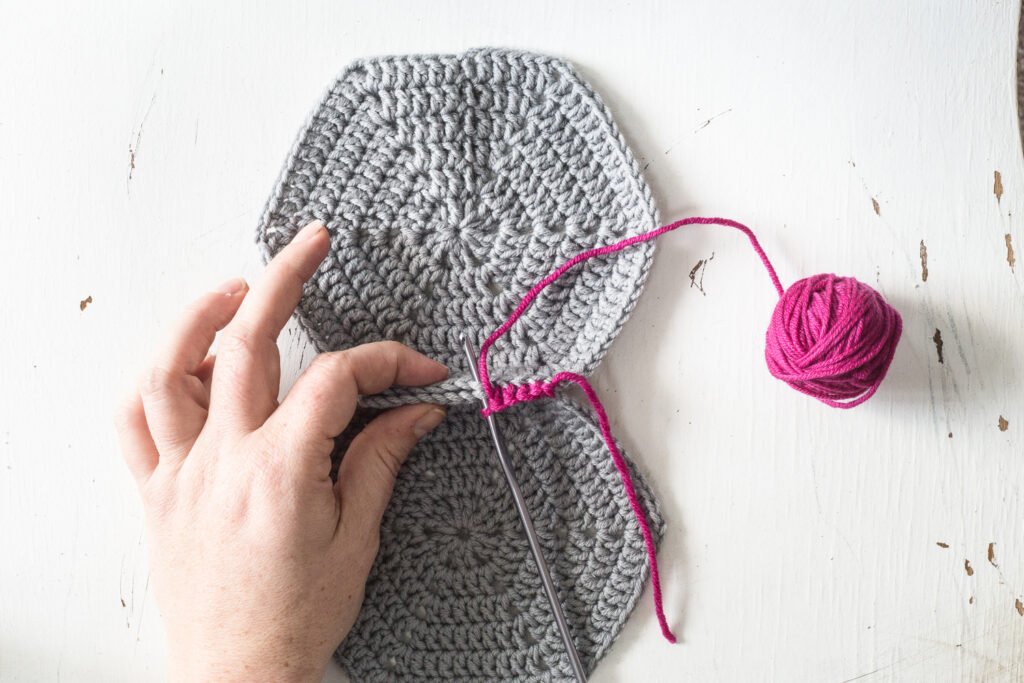
Joining Step 1: With Col B, align the hexagons you want to join with WS facing, working into the inside loops only, dc into each ch and stitch across the side. (Alternate photo Joining Step Alt).
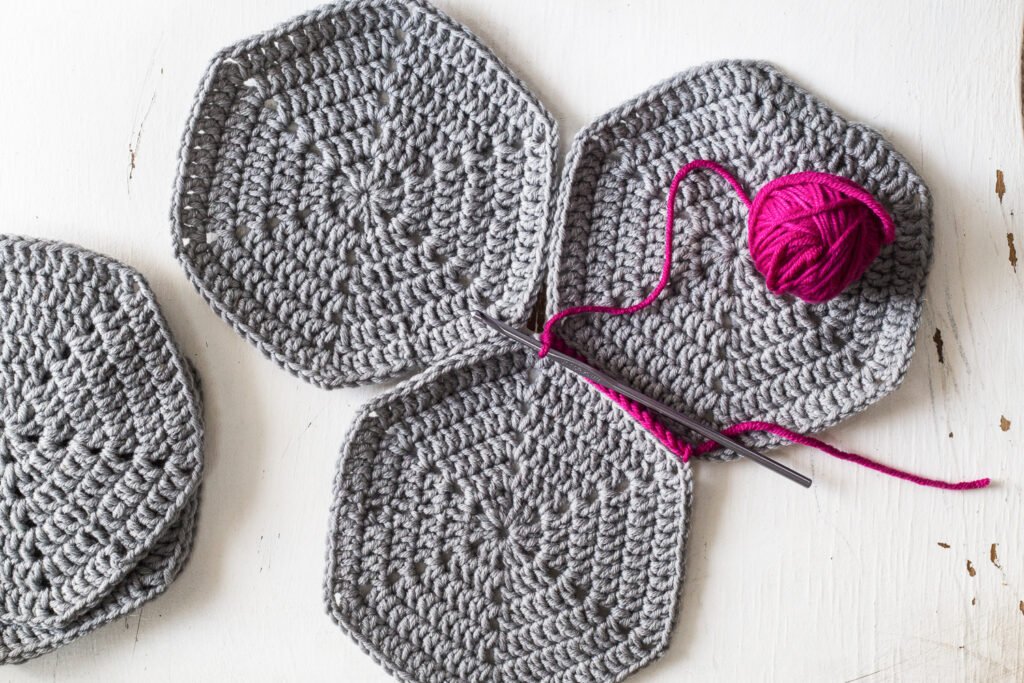
Joining Step 2: Bring the next hexagon to the adjacent edge of the central hexagon. Join as before, working into the inside loops of the ch and dc sts of each of the hexagons you are joining.
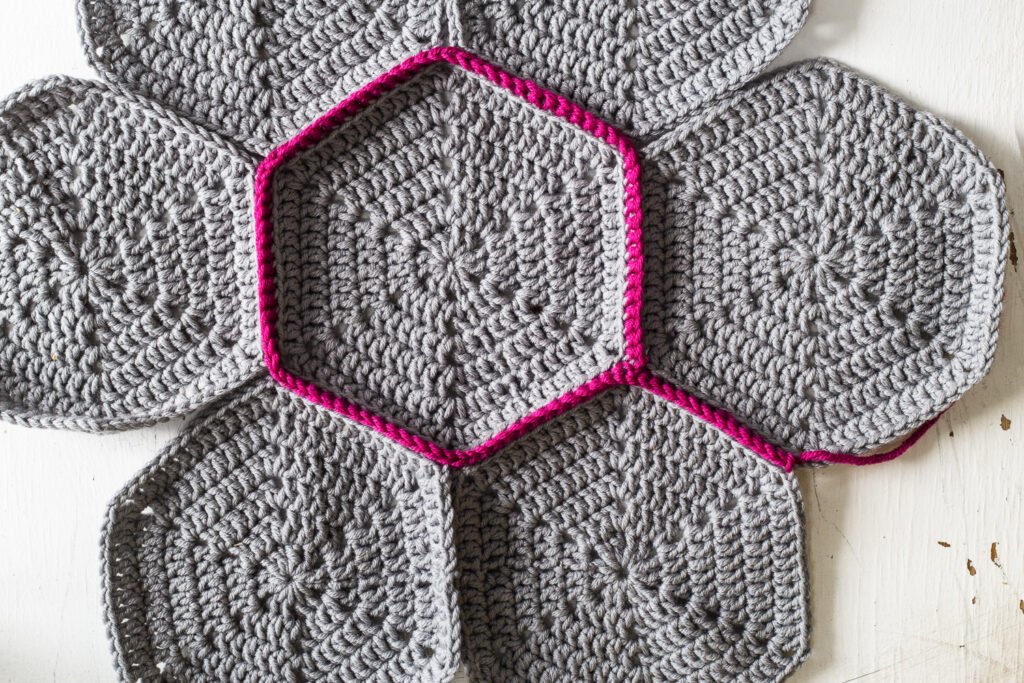
Joining Step 3: Continue in this manner until all of the hexagons are joined to the central hexagon.
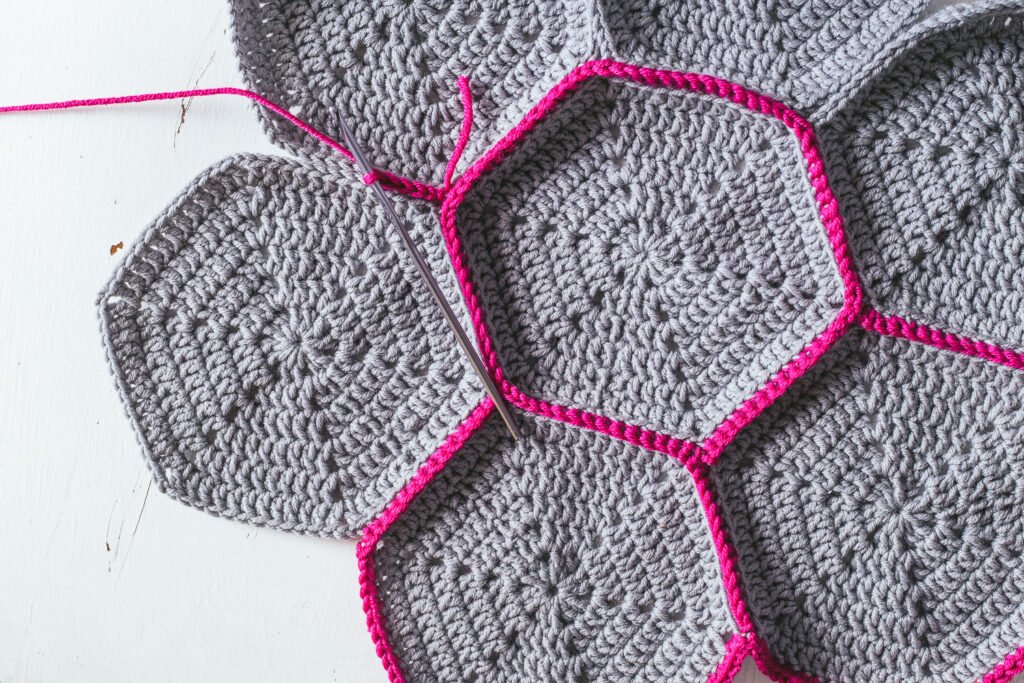
Joining Step 4: Working from the centre out, join the other hexagons together. When you reach the edge, continue around the outside of the hexagon, working into the chain spaces and both loops of the dc to create edging.
Originally published in #Crochet magazine.
